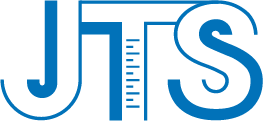IP ProductProduct
Your Location:Home > IP ProductRoHS is a mandatory standard established by EU legislation. Its full name is the Directive on the Restriction of the Use of Certain Hazardous Substances in Electrical and Electronic Equipment. Its purpose is to restrict the use of certain hazardous substances in electrical and electronic equipment (EEE) to reduce harm to the environment and human health.
The RoHS Directive has undergone multiple revisions and updates. The initial directive (2002/95/EC), known as RoHS 1.0, restricted six substances: Lead (Pb), Cadmium (Cd), Mercury (Hg), Hexavalent Chromium (Cr VI), Polybrominated Biphenyls (PBBs), and Polybrominated Diphenyl Ethers (PBDEs). It was later replaced by Directive 2011/65/EU, known as RoHS 2.0.
Directive 2011/65/EU was officially published in the Official Journal of the European Union (OJEU) on July 1, 2011, and entered into force on July 21, 2011. The new directive became fully applicable on January 3, 2013, simultaneously repealing the old RoHS Directive 2002/95/EC. RoHS 2.0 not only expanded the product scope but also imposed new obligations on EEE manufacturers, namely the preparation of an EU Declaration of Conformity and affixing the CE marking to finished products.
In 2015, the European Commission published Delegated Directive (EU) 2015/863, which amended RoHS 2.0 by adding restrictions on four phthalates: Bis(2-ethylhexyl) phthalate (DEHP), Dibutyl phthalate (DBP), Benzyl butyl phthalate (BBP), and Diisobutyl phthalate (DIBP). This update is commonly referred to in the industry as RoHS 3.0.
The core of the RoHS Directive is the restriction of hazardous substances. The original version restricted 6 substances, while the latest RoHS directive restricts 10 hazardous substances.
The restricted substances and their maximum concentration limits are as follows (unit: ppm by weight in homogeneous material):
| Substance Name | Limit (ppm) |
| Lead | 1000 |
| Mercury | 1000 |
| Cadmium | 100 |
| Hexavalent Chromium | 1000 |
| Polybrominated Biphenyls | 1000 |
| Polybrominated Diphenyl Ethers | 1000 |
| Bis(2-ethylhexyl) phthalate | 1000 |
| Benzyl butyl phthalate | 1000 |
| Dibutyl phthalate | 1000 |
| Diisobutyl phthalate | 1000 |
1.Large household appliances
2.Small household appliances
3.IT and telecommunications equipment
4.Consumer equipment
5.Lighting equipment
6.Electrical and electronic tools
7.Toys, leisure, and sports equipment
8.Medical devices (with some exemptions)
9.Monitoring and control instruments
10.Automatic dispensers
11.Other EEE not covered by any of the categories above
The RoHS Directive includes an exemption mechanism. An exemption allows a specific hazardous substance to be used in certain applications even if it exceeds the concentration limits, provided specific conditions are met. Exemptions are granted because the RoHS Directive considers technical feasibility when restricting specific hazardous substances. If eliminating a substance or finding a substitute is technically impossible, or if the substitute's negative impact on the environment, health, or consumer safety outweighs the benefits, an exemption may be established. However, RoHS exemptions are not permanent; each exemption has a specific expiry date. If substitution is not technically or economically feasible, companies must apply for an exemption renewal no later than 18 months before its expiry date. Exemption clauses are listed in Annex III and Annex IV of the directive.China has also introduced its own RoHS management measure – the "Management Methods for the Restriction of the Use of Hazardous Substances in Electrical and Electronic Products" (China RoHS), marking a significant step in aligning China's environmental regulation of electronic products with international standards.J-Testing is a CNAS, CMA, and CPSIA accredited laboratory, committed to providing global clients with professional third-party testing, consulting services, and cross-border certification assistance.






 Our Service
Our Service
